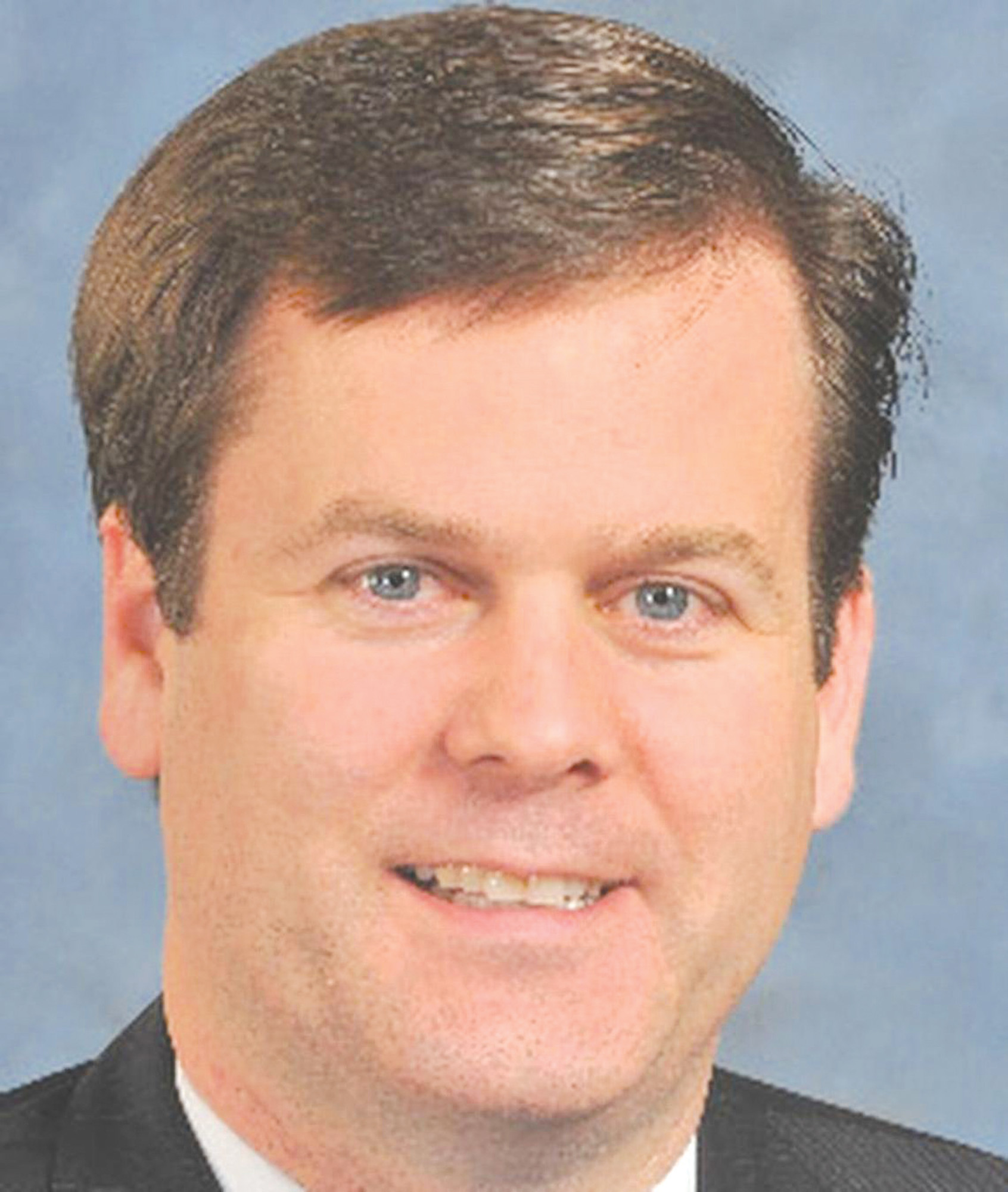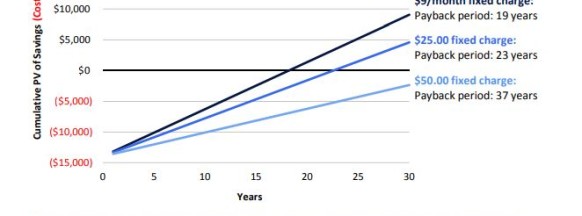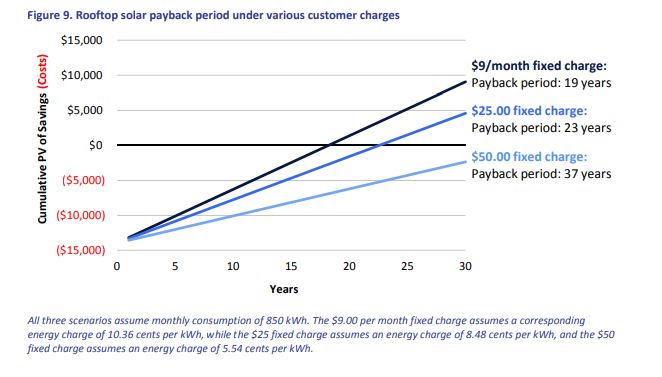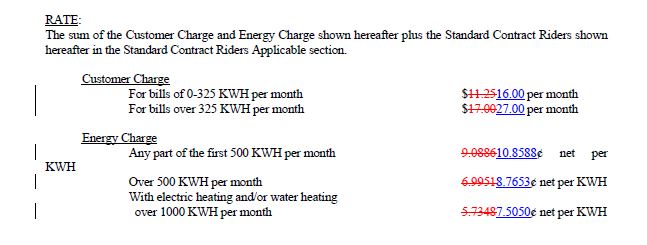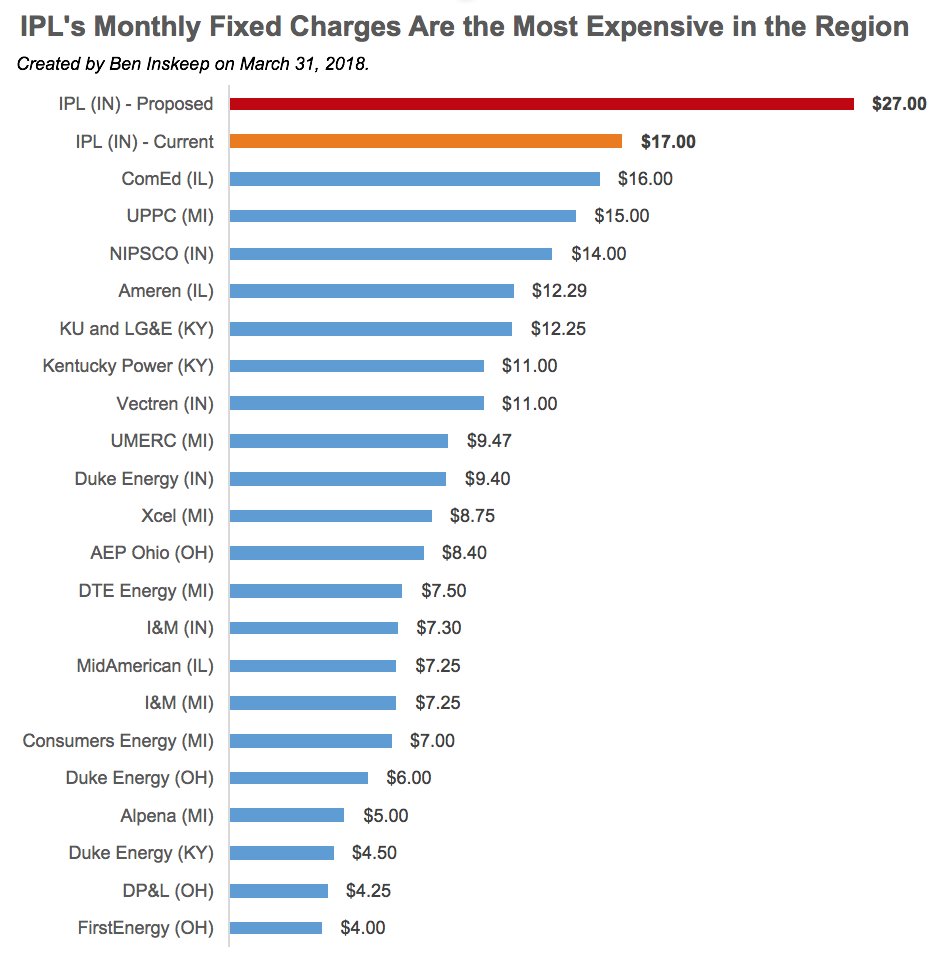
A 1.1 MW solar array is sited alongside a wind farm near Garden, Michigan.
It is still unclear what the new rates will be, when they will take effect, or if they will be reversed by new legislation.
Two weeks after Michigan regulators approved a new method for compensating utility customers who send electricity back to the grid, there were more questions than answers about the future of distributed generation here.
On April 18, the Michigan Public Service Commission approved a distributed generation tariff that replaces net metering, a 10-year old program that credits customers — most often with rooftop solar panels — with retail rates for their excess electricity sent back to the grid. The new prices will vary by utility but will be lower than retail rates, feeding the ongoing debate about the net value rooftop solar customers provide to the grid.
It was still unclear what the new prices will look like, when they will take effect, or even if they will, as lawmakers mount an attempt to restore net metering.
Solar installers, therefore, haven’t had answers for customers seeking to understand the payback period of installing projects.
“It’s very confusing to the industry,” Liesl Eichler Clark, president of the Michigan Energy Innovation Business Council, said during a May 1 House committee meeting in Lansing.
Eichler Clark is telling MEIBC’s member solar companies to “talk with their clients early, sign something now if you can” to be grandfathered into net metering. Those who enroll in net metering before new rate cases are approved will be grandfathered for 10 years.
Ultimately, solar advocates see a patchwork of rates coming for those looking to self-generate electricity and send some back to the grid. The new rates take effect with the approval of rate cases filed after June 1, though regulators can’t say when those will be filed. Unlike Indiana, which began phasing out its net metering program after Dec. 31, there isn’t a certain date when the program takes effect.
Meanwhile, a legislative effort backed by multiple environmental groups has added even more uncertainty, even though its prospects are unlikely.
State Rep. Yousef Rabhi, a Democrat from Ann Arbor, proposed billsin March to restore net metering. On May 1, a bipartisan group of lawmakers introduced a package of “energy freedom” bills that would, in part, lift a 1 percent cap on customers who can participate in net metering. A similar package of bills was first introduced in 2014.
“The new (distributed generation tariff) really does not take into account the many advantages solar brings to the system,” Rabhi testified to the House Energy Policy Committee on May 1.
The committee chairman, Republican Rep. Gary Glenn of Midland, supports restoring net metering and lifting the 1 percent cap, which promotes the “principles of diversity and competition,” he said.
However, Glenn said the proposals are unlikely to gain traction in the Senate, which has been hesitant to revisit sweeping energy policy passed in 2016 that included the net metering changes.
“The attitude of the Senate Energy and Technology Committee and the Governor’s Office is to mold policy that benefits utilities,” Glenn said.
Sen. Mike Nofs, the Republican chairman of the Energy and Technology Committee, could not be reached for comment.
Anna Heaton, spokeswoman for Gov. Rick Snyder, said the MPSC has “followed the Legislature’s directives” with the new distributed generation tariff. “The Legislature asked the PSC to develop a program that reflects the need for all utility customers to pay their fair share of using the state’s electrical grid based on cost-of-service principles, which is what they did,” Heaton said.
MPSC officials also stood by the new distributed generation tariff, saying it complies with 2016 energy laws in figuring out the cost-of-service of solar customers. They say the process was transparent and involved a variety of stakeholders.
Chairwoman Sally Talberg, who was appointed to the MPSC by Snyder in 2013, said the new inflow/outflow calculation would compensate customers more than utilities initially proposed during the 2016 energy law debate. That “buy all, sell all” model would have been based on wholesale energy prices, which Talberg said is about one-third of the distributed generation tariff’s “avoided cost.”
When pressed by Glenn during the May 1 hearing, Talberg said it’s unclear what kind of economic signals the new program will send, or whether it will stifle Michigan’s rooftop solar industry.
Other factors may affect customers’ decision to install panels, such as declining costs, President Trump’s tariffs on imported panels, the availability of the federal Investment Tax Credit, which is phasing out in the coming years, and shifting utility rates, Talberg said.
Eichler Clark countered that the new program’s uncertainty is “just really challenging” for installers and customers. “At the end of the day, all of this is about economics,” she said.
Rob Rafson, president of ChartHouse Energy in western Michigan who was closely involved in the MPSC’s distributed generation stakeholder process, calculated that the average residential net metering customer in Michigan is overcharged by about $126 a year. The new inflow/outflow model would overcharge customers by roughly $300 a year, he added, suggesting the MPSC went in the opposite direction of finding a “fair and reasonable” replacement for net metering.
“The interesting thing is what happens after this,” Rafson said. A positive result may be lifting the cap on distributed generation customers. Also, the decreasing costs of energy storage may allow customers to configure their installations that result in zero outflow to the grid, keeping their generation “behind the meter.”
“The expectation is that there is going to be another significant increase in rates in the state,” Rafson said. “This is going to be great profitability for utilities, but it’s going to be very damaging to existing businesses and drawing new businesses to the state.”
A similar scenario played out at the end of 2017 when Indiana began phasing out its net metering program and grandfathered customersuntil 2047. If customers enrolled after Dec. 31, 2017, they are only grandfathered until 2032. Net metering will end after July 1, 2022, or when utilities reach 1.5 percent caps, whichever is earlier.
Indiana solar advocates actively encouraged utility customers to install solar panels, at times coming up close to the Dec. 31 deadline.
Like Michigan, though, there is still uncertainty about when and whether Indiana utilities continue to offer net metering in the future, said Kerwin Olson, executive director of the Citizens Action Coalition in Indianapolis.
“We’re in this state where we don’t really know and the regulatory commission doesn’t really seem to care,” Olson said. “In this state, utilities effectively write and carry out the policies. The commission has been incredibly hands off.”
Also, Olson said it’s unclear what compensation Indiana net metering customers will receive after 2032 because it’s based on average wholesale prices plus a 25 percent bonus.
“Homeowners, businesses, banks and financing companies all need certainty,” Olson said. “It’s difficult to get a clear picture of what the financial framework of an installation will look like.”
Eichler Clark said the MPSC’s distributed generation tariff marks a trend of removing incentives for distributed generation, something the “energy freedom” bills look to restore.
“We are putting up barriers left and right in Michigan to that type of work,” Eichler Clark said.




